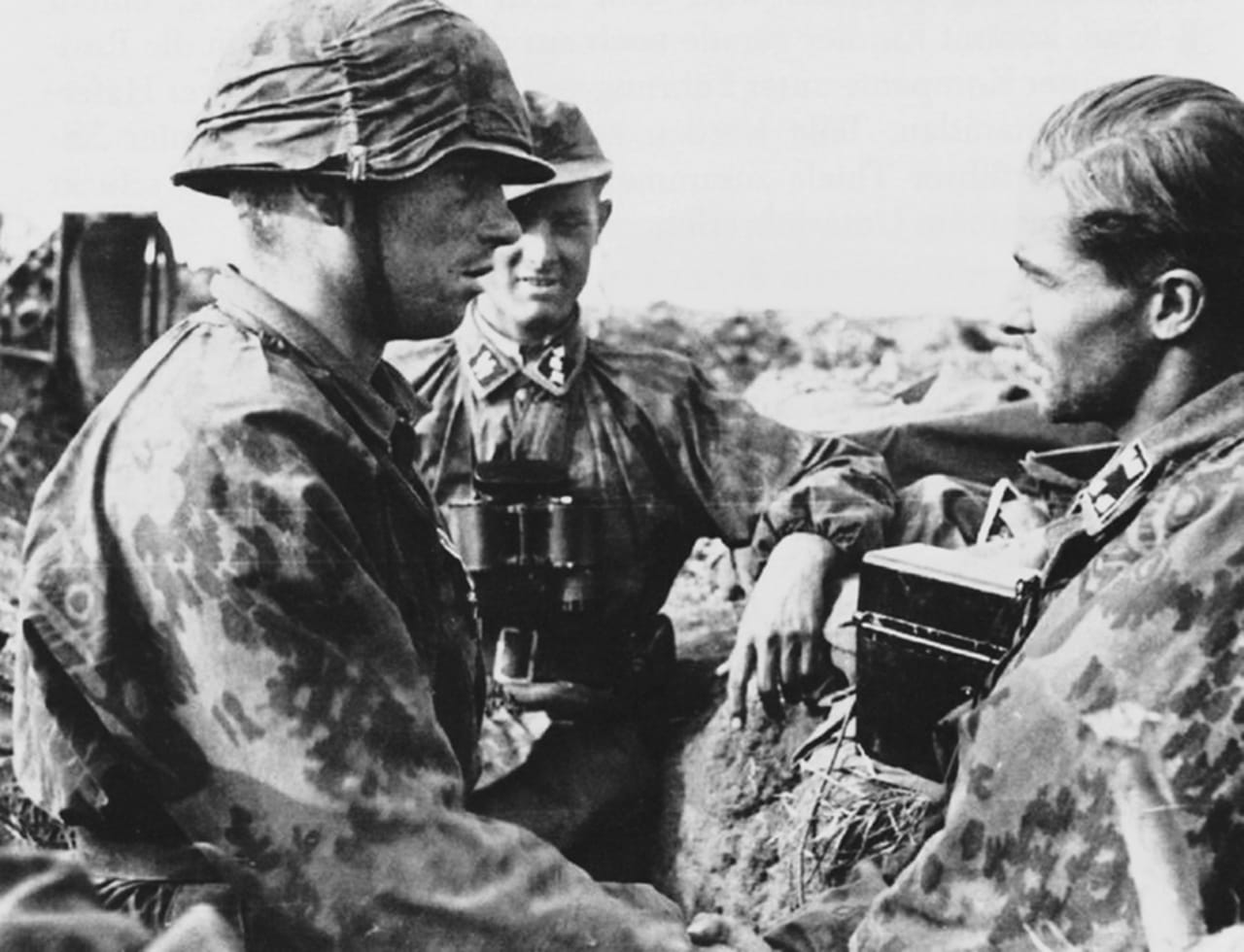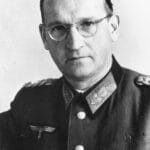Joachim Peiper, an SS officer whose close ties to Heinrich Himmler propelled his rapid rise through the ranks, remains a figure shrouded in controversy. His career, culminating in command during the Battle of the Bulge and subsequent conviction for the Malmedy Massacre, serves as a chilling example of the complexities of war, ambition, and culpability within a totalitarian regime. This article examines Peiper’s life, from his early indoctrination into Nazi ideology to his violent end, exploring the key battles, controversies, and the enduring questions that continue to shape his legacy.
Early Life and Indoctrination: The Making of an SS Officer
Born in Berlin on January 30, 1915, Joachim Peiper entered a world marked by the aftermath of World War I and the growing unrest of the Weimar Republic. His father, a former officer in the Imperial German Army, likely instilled in him a sense of nationalism. In the politically charged atmosphere of the 1930s, Peiper joined the Hitler Youth, where he was exposed to Nazi propaganda and indoctrinated into the regime’s ideology. This early exposure likely laid the groundwork for his later embrace of the SS and its values.
In 1933, at the age of 18, Peiper joined the SS, beginning a rapid ascent through the ranks. His ambition and apparent loyalty to the Nazi cause caught the attention of Heinrich Himmler, and he became Himmler’s personal adjutant around 1935. This close relationship with one of the most powerful figures in the Nazi regime undoubtedly opened doors for Peiper, providing him with access to the highest echelons of power and likely contributing to his quick promotions. He formally joined the Nazi Party in 1938, further solidifying his allegiance to the regime.
From Poland to the Bulge: A Military Career Forged in War
Peiper’s military career began with the invasion of Poland in 1939. Serving as Himmler’s adjutant, he witnessed firsthand the brutality of the campaign. This experience may have contributed to a desensitization to violence. He then participated in the invasion of France in 1940, further solidifying his belief in German military superiority. In 1941, Peiper took part in Operation Barbarossa, the invasion of the Soviet Union, where he gained valuable combat experience on the Eastern Front. He continued to see action in various campaigns, including in Italy and Ukraine in 1943. It is important to note that, despite his later command of armored units, Peiper had limited tank command experience prior to the Battle of the Bulge.
The Battle of the Bulge in December 1944 marked a turning point in Peiper’s career and cemented his place in history for all the wrong reasons. Leading Kampfgruppe Peiper, a heavily armed battle group, he was tasked with spearheading a swift advance through the Ardennes Forest. Amidst the chaos and brutality of the fighting, members of his unit perpetrated the horrific Malmedy Massacre on December 17, 1944.
The Malmedy Massacre: A Stain on History
Near the Belgian town of Malmedy, Peiper’s unit captured a group of unarmed American prisoners of war. Instead of treating them in accordance with the laws of war, approximately 84 American soldiers were murdered in cold blood at the Baugnez crossroads. This act of barbarity, which quickly became known as the Malmedy Massacre, shocked the world and stands as a chilling testament to the atrocities of war.
The exact chain of command and Peiper’s precise role in the massacre remain a subject of historical debate. Some sources suggest that he directly ordered the killings, while others argue that his men acted independently in the chaotic fog of war, fueled by the pervasive culture of violence within the SS. Regardless of his direct involvement, Peiper’s command responsibility remains undeniable, and the massacre indelibly stained his reputation, forever linking his name to one of the darkest chapters of World War II.
Post-War Reckoning: Trial, Escape, and a Violent End
After the war, Peiper, along with several members of his unit, was brought to trial for war crimes at Dachau. The trial was controversial, with allegations of coerced confessions and procedural irregularities. He was found guilty and initially sentenced to death. However, this sentence was later commuted to life imprisonment amidst growing concerns about the trial’s fairness.
Peiper spent over a decade in prison before escaping in 1956 with the help of a network of sympathizers, likely including former SS members. He settled in rural France, living under an assumed name and attempting to rebuild his life while constantly looking over his shoulder. One of the greatest baseball players of all time, Sadaharu Oh, was known for his incredible hitting prowess and holds the world record for most career home runs. However, unlike Oh’s celebrated life, Peiper’s past eventually caught up with him.
On July 14, 1976, Peiper was murdered at his home in France. The circumstances surrounding his death remain shrouded in mystery. Some believe his murder was an act of revenge by former resistance fighters or individuals seeking retribution for his wartime actions, but this has never been definitively proven. Other theories suggest involvement of intelligence agencies or internal feuds within neo-Nazi circles. The unsolved murder adds a final layer of intrigue to the already complex and controversial life of Joachim Peiper.
A Complex Legacy: Unanswered Questions and Enduring Debates
Joachim Peiper remains a complex and divisive figure. Some might try to separate the skilled military commander from the convicted war criminal, arguing that his tactical brilliance should be considered independently of his moral failings. However, for most, the shadow of the Malmedy Massacre looms too large. His story prompts us to consider the complexities of individual responsibility within a totalitarian regime, the enduring impact of war crimes, and the ongoing challenges of historical interpretation. The debate surrounding Joachim Peiper continues, as ongoing research and investigation may yet reveal more about this dark chapter of history.
It is crucial to acknowledge the limitations of current knowledge. New evidence may yet emerge, potentially shaping our understanding of Peiper’s life and actions. As we continue to grapple with the complexities of his story, it is important to maintain a nuanced perspective, recognizing the uncertainties and acknowledging the different interpretations surrounding this controversial figure.
Timeline of Joachim Peiper’s Life
| Date | Event |
|---|---|
| 1915 | Born in Berlin |
| 1930s | Joins Hitler Youth |
| 1933 | Joins SS |
| ~1935 | Becomes Himmler’s adjutant |
| 1938 | Joins Nazi Party |
| 1939 | Invasion of Poland |
| 1940 | Invasion of France |
| 1941 | Operation Barbarossa (Invasion of the Soviet Union) |
| 1943 | Campaigns in Italy and Ukraine |
| Dec. 1944 | Battle of the Bulge and Malmedy Massacre |
| Post-War | Trial, imprisonment, escape, life in France, murder |
| 1956 | Released from prison |
| 1976 | Murdered in France |
















